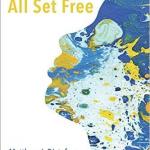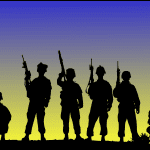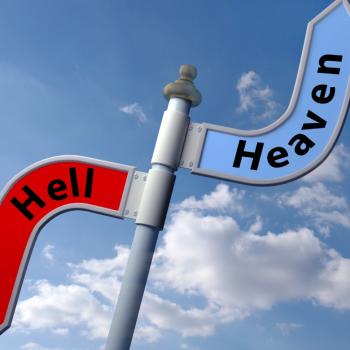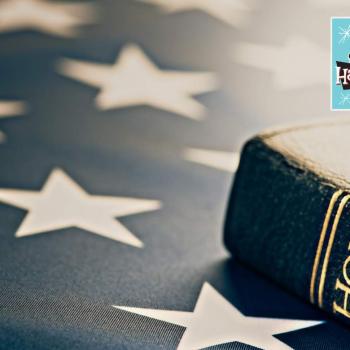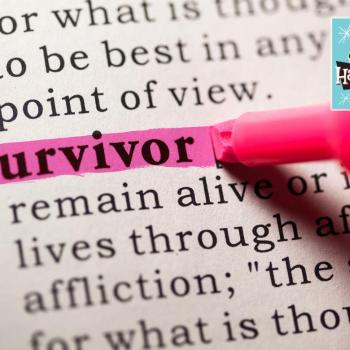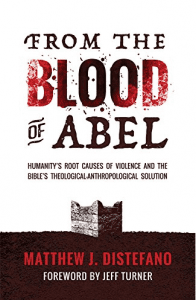 The Bible is a bloody book and I do not mean that in the way the British use “bloody” . . . as a noun intensifier that is. Rather, what I mean is that if it were a movie, it would be rated R for the incessant use of violence contained therein. Thematically, conquest and power is front and center as warring clans are constantly wiping each other off the face of the earth. From the great and mighty Pharaohs of Egypt and Caesars of Rome, all the way down to the smallest tribes of Judah, war is king and, to quote the poet Bob Dylan, we wage it “with God on our side.”[1] And these gods, such as the more well known Ba’al and Molech, are so blood-thirsty that they are believed to demand the murder—ahem, sacrifice—of innocent children in order to be propitiated. There is even a story in 2 Kings 3 where the king of Moab, during a great battle with Israel, sacrifices his firstborn son to his god Chemosh[2] in order to secure victory over the Israelites. And shockingly, it appears to work! 2 Kings 3:27 tells us that after the sacrifice of the heir to the Moabite throne, a “great wrath came upon Israel” and the Israelites withdrew from battle. This shows just how the belief in the power of sacrifice is a great power in and of itself. We now know Chemosh does not exist so would never believe that the sacrifice of a Moabite prince would actually lead to victory in war, but the writer of 2 Kings sure did. There was power in blood . . . and still is! I will get to that later.
The Bible is a bloody book and I do not mean that in the way the British use “bloody” . . . as a noun intensifier that is. Rather, what I mean is that if it were a movie, it would be rated R for the incessant use of violence contained therein. Thematically, conquest and power is front and center as warring clans are constantly wiping each other off the face of the earth. From the great and mighty Pharaohs of Egypt and Caesars of Rome, all the way down to the smallest tribes of Judah, war is king and, to quote the poet Bob Dylan, we wage it “with God on our side.”[1] And these gods, such as the more well known Ba’al and Molech, are so blood-thirsty that they are believed to demand the murder—ahem, sacrifice—of innocent children in order to be propitiated. There is even a story in 2 Kings 3 where the king of Moab, during a great battle with Israel, sacrifices his firstborn son to his god Chemosh[2] in order to secure victory over the Israelites. And shockingly, it appears to work! 2 Kings 3:27 tells us that after the sacrifice of the heir to the Moabite throne, a “great wrath came upon Israel” and the Israelites withdrew from battle. This shows just how the belief in the power of sacrifice is a great power in and of itself. We now know Chemosh does not exist so would never believe that the sacrifice of a Moabite prince would actually lead to victory in war, but the writer of 2 Kings sure did. There was power in blood . . . and still is! I will get to that later.
But the Bible is also a book about hope and restoration. It testifies to a once enslaved people, who are delivered from bondage by a God who is for the downtrodden, for the poor, for the oppressed, and for the least of society.[3] It is also a book that is not afraid to testify against itself and its tradition, a book that includes the voice of the prophets who boldly critique their own faith tradition to the point of death.[4] Then, unlike any other event in history, it testifies about Christ Jesus, the one whom the Jewish prophets prophetically declared would “command peace to the nations” and whose “dominion shall be from sea to sea.” (Zechariah 9:9—emphasis mine) Furthermore, as violent the imagery is in the final book of the Bible, the Book of Revelation, hope in fact crescendos when it is said that from the slain lamb (Revelation 5:6), eternal life-giving water flows, sustaining the “tree of life” that is for the “healing of the nations” (Revelation 22:1–2—emphasis mine). In the midst of war and chaos and death and mayhem, there is a blessed optimism for all people as the writer of Revelation also explicitly states that the gates of heaven never close (Revelation 21:25) and that the Holy Spirit and bride of Christ (the church) perpetually invite others in (Revelation 22:17). Thus, there always remains hope—enough for that writer to envision a time when “he will wipe every tear from their eyes.” (Revelation 21:4)
So, then, what do we, as Christians, do with the Bible? Do we do as many in the Protestant tradition do and simply open it up and see what God is “speaking to us?” Do we read the book with a flat-hermeneutic (literal interpretation), and attempt to coalesce seemingly contradictory characteristics about God as the more fundamentalist-inclined do? Or, do we do a “one-eighty” and chuck out the whole Old Testament as Marcion of Sinope suggested or even more dramatic yet; toss out the entire Bible—New Testament included—as post-enlightenment atheists strongly advise?
Well, I do not believe any of these options or any similar are satisfactory and over the course of this book, will attempt to offer a better way to engage the Bible. I will argue that, rather than one unequivocal voice (God’s) in Scripture, there are multiple voices present (religion vs. revelation) and that the lens from which we discern what is what is that of Jesus hanging on the cross. It is this Christocentric lens, I will assert, that has the power to save us from ourselves and our fundamental human problem, namely that of violence (which I will introduce in chapter one). It has the power to save us from our propensity to create victims in the name of God, and, to use Pauline language, from the powers and principalities that structure our fallen world (Ephesians 6:12). It is the love Christ has for us that places him in the center of our death-dealing systems but it is also the love the Father has for him and for all of humanity that resurrects him three days later. This is the Good News and it is within this book called “The Bible” where we find hope; hope of a future where violence is no more, where the nations are indeed healed by the tree of life, and where the peace of God reigns forevermore. At least, that will be the case I am attempting to make in this book.
So let us journey together and discover how the Bible and more specifically the Gospel can be used to help heal humanity of her root causes of conflict. Let us discover the God who truly, in the end, desires mercy for all of his children. Let us discover a God who also desires for all his children to come home. Let us discover true peace for all.
Matthew J. Distefano
Paradise, CA
December 21, 2015
[1] The quoted section is the title of the third track from Bob Dylan’s 1964 album The Times They Are A-Changin’.
[2] Chemosh is depicted as the god of Moab in the Mesha Stele (c. 840 BC), or “Moabite Stone,” lines 3, 4, 8, 12, etc.
[3] This is traced back to the story of the Exodus, where Moses delivers the Hebrew people from bondage at the hands of the Egyptians.
[4] The attempted murder of the prophet Jeremiah can be found in Jeremiah 38:1 – 6, while the murder of Zechariah is found in 2 Chronicles 24:20–25.


